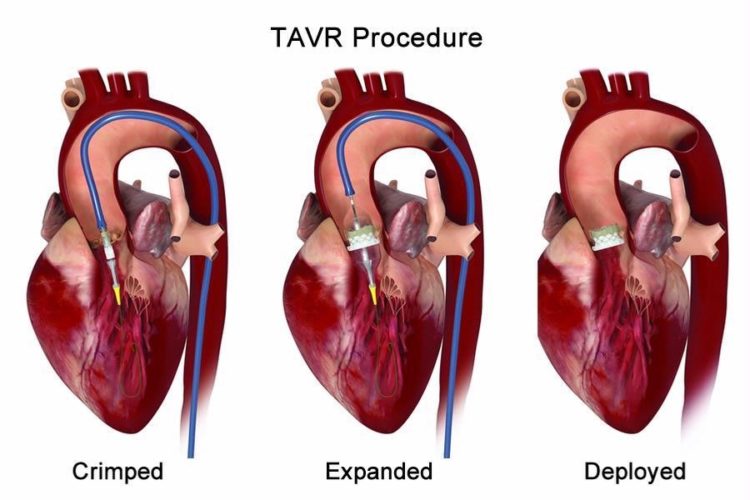TAVR – Transcatheter Aortic Valve Replacement
WHAT IS TAVR? (Also called TAVI)
Transcatheter aortic valve replacement (TAVR) is a minimally invasive procedure to replace a narrowed aortic valve that fails to open properly (aortic valve stenosis). Transcatheter aortic valve replacement is sometimes called transcatheter aortic valve implantation (TAVI).
TAVR may be an option for people who are considered at intermediate or high risk of complications from surgical aortic valve replacement. TAVR may also be indicated in certain people who can’t undergo open-heart surgery.
WHO BENEFITS MOST FROM TAVR?
TAVR may be an option if you have aortic stenosis that causes signs and symptoms. For instance, people who are candidates for TAVR may include those who are considered at intermediate or high risk of complications from surgical aortic valve replacement. Conditions that may increase the risk of surgical aortic valve replacement include lung disease or kidney disease — which increase your risk of complications during surgical aortic valve replacement.
HOW IS TAVR OR TAVI DIFFERENT FROM THE STANDARD VALVE REPLACEMENT?
Usually valve replacement requires an open heart procedure with a “sternotomy”, in which the chest is surgically separated (open) for the procedure. The TAVR or TAVI procedures can be done through very small openings that leave all the chest bones in place. The TAVR procedure is performed using one of two different approaches, allowing the cardiologist or surgeon to choose which one provides the best and safest way to access the valve:
Entering through the femoral artery (large artery in the groin), called the transfemoral approach, which does not require a surgical incision in the chest, or
Using a minimally invasive surgical approach with a small incision in the chest and entering through a large artery in the chest or through the tip of the left ventricle (the apex), which is known as the transapical approach.
TAVR/TAVI – Latest Treatment of Aortic Valve/Heart Valve

